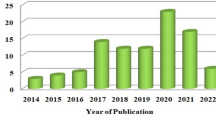Abstract
In the era of artificial intelligence, healthcare informatics holds significant promise for cardiovascular disease (CVD) analysis. This study employs three computational intelligence approaches to address CVD-related challenges comprehensively. At first, various statistical methods unveil relationships between heterogeneous risk factors and predicted outcomes, employing tests of significance to discern differences in risk factors between classes with and without CVD. In the second stage, a hybrid statistical approach incorporates feature selection, identifying critical risk factors, and employs Tri-fuzzy interval arithmetic for precise estimation. Finally, the proposed Gaussian Probabilistic Neural Network (Gaussian-PNN) predicts heart disease onset with maximum accuracy, providing a nuanced assessment of CVD probability for each patient using interval-based lower and upper bounds derived from Tri-Fuzzy numbers. Experimental validations affirm the efficacy of these contributions, highlighting the analysis of significant risk factors, interrelationship establishment, and the novel integration of crisp and fuzzy interval estimates, advancing heart disease diagnosis.









Similar content being viewed by others
Data availability
The datasets used and analyzed during the study are available online for research purposes.
References
Yadav DC, Pal S (2020) Prediction of heart disease using feature selection and random forest ensemble method. Int J Pharm Res 12(4):56–66
Javid Imran, Alsaedi Ahmed K, Ghazali Zikri (2020) Enhanced accuracy of heart disease prediction using machine learning and recurrent neural networks ensemble majority voting method. Int J Adv Computer Sci Appl 11(3):540–551
Björkelund Anna, Ohlsson Mattias, Lundager Forberg Jakob, Mokhtari Arash, de Capretz Petra Olsson, Ekelund Ulf, Björk Jonas (2021) Machine learning compared with rule-in/rule-out algorithms and logistic regression to predict acute myocardial infarction based on troponin t concentrations. J Am Coll Emerg Physicians Open 2(2):1–9
Alam Md Jahoor, Alnafeesah Abdullah Ibrahim, Saeed Mohd (2020) Inter-correlation of risk factors among heart patients. AIMS Public Health 7(2):354
Khanal Mahesh Kumar, Mansur Ahmed MSA, Moniruzzaman Mohammad, Banik Palash Chandra, Dhungana Raja Ram, Bhandari Pratiksha, Devkota Surya, Shayami Arun (2018) Prevalence and clustering of cardiovascular disease risk factors in rural nepalese population aged 40–80 years. BMC Public Health 18(1):1–13
Theerthagiri Prasannavenkatesan, Vidya Jyothiprakash (2022) Cardiovascular disease prediction using recursive feature elimination and gradient boosting classification techniques. Expert Syst 39(9):e13064
Dissanayake K, Johar Md GM (2021) Comparative study on heart disease prediction using feature selection techniques on classification algorithms. Applied Computational Intelligence and Soft Computing, p 1–17
Mishra Indrani, Mohapatra Subasish (2023) An enhanced approach for analyzing the performance of heart stroke prediction with machine learning techniques. International Journal of Information Technology, p 1–14
Mohapatra Debasis, Bhoi Sourav Kumar, Mallick Chittaranjan, Jena Kalyan Kumar, Mishra Satrujit (2022) Distribution preserving train-test split directed ensemble classifier for heart disease prediction. Int J Inform Technol 14(4):1763–1769
Bhavekar Girish S, Goswami Agam Das (2022) A hybrid model for heart disease prediction using recurrent neural network and long short term memory. Int J Inform Technol 14(4):1781–1789
Latha CBC, Jeeva SC (2019) Improving the accuracy of prediction of heart disease risk based on ensemble classification techniques. Inform Med Unlocked 16:1–9
Sharwardy Sharmin Nahar, Sarwar Hasan, Rahman Mohammad Zahidur (2023) The impact of markov model to predict the status of children with congenital heart disease at post-operative icu. Int J Inform Technol 15(6):3285–3292
Dubey Animesh Kumar, Sinhal Amit Kumar, Sharma Richa (2023) Heart disease classification through crow intelligence optimization-based deep learning approach. International Journal of Information Technology, p 1–16
Shah Devansh, Patel Samir, Bharti Santosh Kumar (2020) Heart disease prediction using machine learning techniques. SN Computer Sci 1:1–6
Kilic A (2020) Inferential methods for the tetrachoric correlation coefficient. J Educ Behav Stat 30(2):213–225
Zelko E, Švab I, Rotar Pavlič D (2018) Quality of life and patient satisfaction with family practice care in a roma population with chronic conditions in northeast slovenia. Zdravstveno varstvo 54(1):18–26
Dunlap WP, Kemery ER (1988) Biserial and point-biserial correlation with correction for nonoptimal dichotomies. Behavior Research Methods, Instruments, and Computers, p 420–422
Bozdogan H (1987) Model selection and akaike’s information criterion (aic): the general theory and its analytical extensions. Psychometrika 52:345–370
Mishra Prabhaker, Pandey Chandra M, Singh Uttam, Gupta Anshul, Sahu Chinmoy, Keshri Amit (2019) Descriptive statistics and normality tests for statistical data. Ann Cardiac Anaesth 22(1):67
Naik Shraddha M, Jagannath Ravi Prasad K, Kuppili Venkatanareshbabu (2020) Estimation of the smoothing parameter in probabilistic neural network using evolutionary algorithms. Ar J Sci Eng 45(4):2945–2955
Siddhartha Manu (2020) Heart disease dataset (comprehensive). IEEE Dataport, Nov
Heart failure clinical records. UCI Machine Learning Repository, 2020. 10.4432/C5Z89R
Escanilla NS, Hellerstein L, Kleiman R, Kuang Z, Shull JD, Page D (2019) Recursive feature elimination by sensitivity testing. In Proc Int Conf Machine Learning and Applications, p 40–47
Nolasco Luiz Ricardo Goulart (2019) Identifying the main risk factors for cardiovascular diseases prediction using machine learning algorithms. Mathematics 9:2537
Anuar Nor Nadiah, Hafifah Hawwa, Zubir Siti Maisarah, Noraidatulakma Abdul Rahman (2020) Cardiovascular disease prediction from electrocardiogram by using machine learning
Rousseauw Jacques, Plessis Johannes du, Benade Albert, Jordaan Pierre, Kotze J, Ferreira J (1983) Coronary risk factor screening in three rural communities. South Afr Med J 64:430–436
Author information
Authors and Affiliations
Corresponding author
Rights and permissions
Springer Nature or its licensor (e.g. a society or other partner) holds exclusive rights to this article under a publishing agreement with the author(s) or other rightsholder(s); author self-archiving of the accepted manuscript version of this article is solely governed by the terms of such publishing agreement and applicable law.
About this article
Cite this article
Bandyopadhyay, S., Sarma, M. & Samanta, D. Tri-fuzzy interval arithmetic with deep learning and hybrid statistical approach for analysis and prognosis of cardiovascular disease. Int. j. inf. tecnol. 16, 2331–2342 (2024). https://doi.org/10.1007/s41870-024-01760-x
Received:
Accepted:
Published:
Issue Date:
DOI: https://doi.org/10.1007/s41870-024-01760-x




